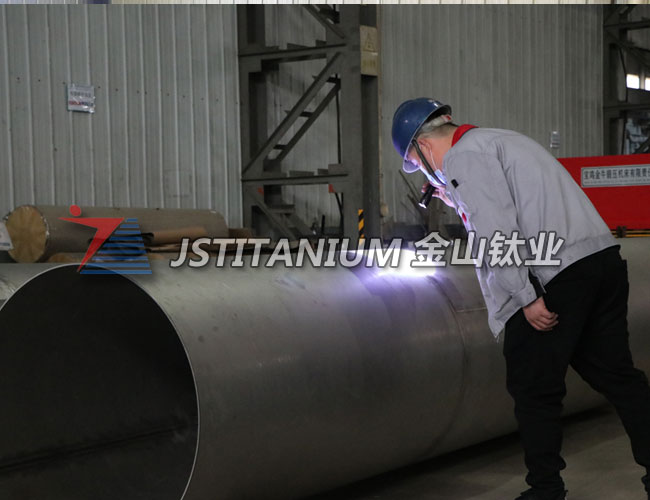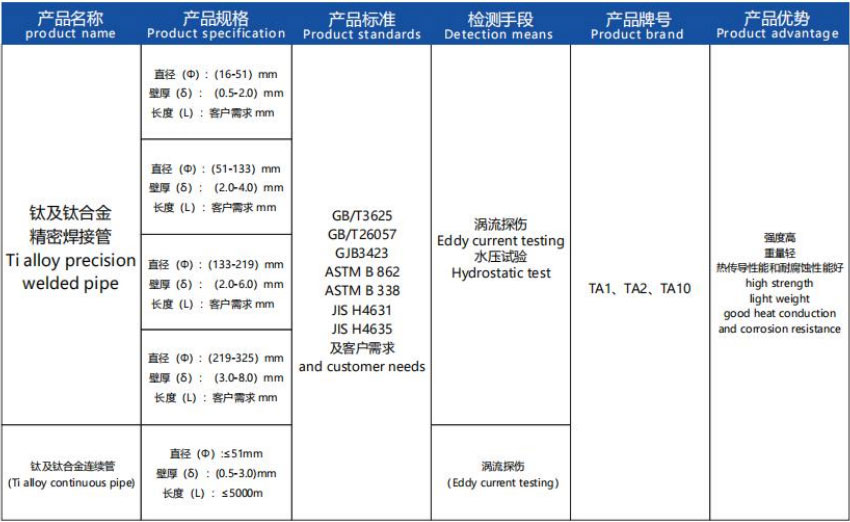
Production process
1. High-quality material screening
The cornerstone of titanium welded pipes lies in high-quality titanium materials. This link involves strict chemical composition analysis, hydrogen content detection, ultrasonic flaw detection and spectral analysis of titanium materials to ensure that each piece of material meets high quality standards and lays a solid foundation for subsequent processing.
2. Precision preparation of tube blanks
Using advanced forging, hot rolling or cold drawing technology, the selected titanium materials are processed into tube blanks that meet the design specifications. This process requires fine control of parameters such as temperature and pressure to ensure the dimensional accuracy and physical properties of the tube blanks.
3. Forming and welding technology
The forming stage includes processes such as blanking, cutting, and beveling to prepare for welding. Subsequently, advanced automatic welding equipment is used to perform longitudinal or spiral welding on the tube blanks to form continuous titanium welded pipes. During the welding process, the welding parameters must be strictly controlled to ensure the quality of the weld.
4. Surface treatment and cleaning
After welding, the titanium welded pipe is sandblasted to remove impurities such as surface oxide scale and welding slag, and multiple cleaning processes are performed to ensure that the inner and outer surfaces of the pipe are smooth and pollution-free, providing good conditions for subsequent applications.
5. Finished product processing and testing
The welded titanium welded pipe is trimmed, straightened, flaw detected, heat treated and other processes are performed to improve its physical properties and dimensional accuracy. At the same time, strict appearance inspection, chemical composition analysis, mechanical property testing and non-destructive testing are carried out to ensure that each titanium welded pipe meets the quality standards.
Overview of industry standards
1. American standards (ASTM, ASME, etc.)
American standards have detailed provisions on the chemical composition, mechanical properties, welding properties and surface quality of titanium welded pipes. These standards are designed to ensure that titanium welded pipes have excellent performance and reliability in applications in high-end fields such as petrochemicals, aerospace, etc.
2. European standards (EN series)
European standards not only focus on the quality and performance of titanium welded pipes, but also emphasize environmental protection and employee safety during the production process. Its standard system covers the entire process from raw material selection to finished product delivery, providing a unified quality evaluation basis for the international trade of titanium welded pipes.
3. International standards (ISO, etc.)
International standard organizations such as ISO have also formulated a series of standards for titanium welded pipes to promote technical exchanges and cooperation around the world. These standards integrate the technical requirements and experience of different countries and regions, providing strong support for the global application of titanium welded pipes.

 WeChat
WeChat